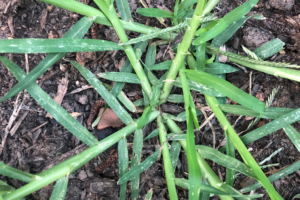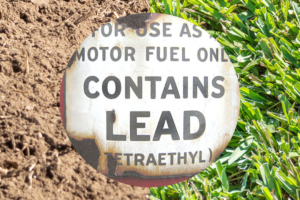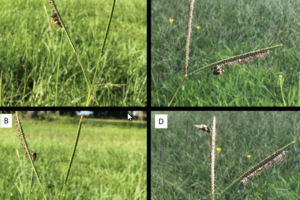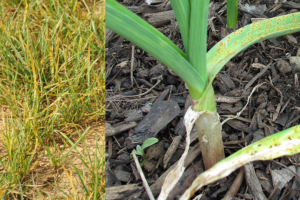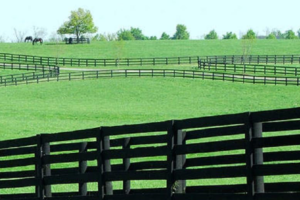
Introduction
The Problem of Environmental Pollution and the Danger of Toxic Compounds
Our environment faces many challenges, and one of the biggest is pollution. This includes pollution from toxic compounds, which can harm both nature and humans. One of these toxic compounds is a form of chromium known as Chromium (VI). Chromium (VI) is nasty stuff. It harms humans and can also affect plants, making it difficult for them to grow. This is a big problem, especially when it enters our soil and water.
The Aim of the Study: Using Lawn Grass for Soil Purification from Chromium (VI)
This study is all about finding a solution to this problem. The researchers wanted to see if they could use lawn grass to clean up soil polluted with Chromium (VI).
Why lawn grass, you might ask? Well, lawn grass is pretty tough. It proliferates, has an extensive root system that can soak up lots of stuff from the soil, and is easy to grow. This makes it a good candidate for soil purification.
The researchers set up an experiment to test this idea, and this article tells us what they found.
Understanding Chromium (VI) and Its Impact
What is Chromium (VI), and How Does It Affect Us?
Chromium (VI) is a form of the metal chromium that’s particularly harmful. It’s often used in industries like leather tanning and metal plating, and it can end up in our soil and water through industrial waste.
When humans are exposed to Chromium (VI), it can cause a lot of health problems. It’s been linked to lung cancer and can cause skin rashes and stomach ulcers.
How Does Chromium (VI) Affect Plants?
Chromium (VI) affects not only humans but also plants. When plants are exposed to Chromium (VI), it can interfere with their growth and development. It can reduce the plant’s ability to photosynthesize, which plants use to make food from sunlight.
But here’s the exciting part: some plants can take Chromium (VI) from the soil and accumulate it in their tissues. This is a process called ‘phytoremediation,’ and it’s one-way plants can help clean up polluted soils.
In this study, the researchers wanted to see if lawn grass could be used for phytoremediation of Chromium (VI). They set up an experiment to test this, and the results were pretty promising.
The Experiment: Using Lawn Grass for Soil Purification
Setting Up the Experiment
The researchers set up an experiment to test how well lawn grass could clean up soil contaminated with Chromium (VI). They grew various lawn grass types in containers, then added Chromium (VI) to the soil.
The grasses they used included Festuca rubra, Festuca arundinacea, Lolium perenne, and Poa pratensis. These are all common types of lawn grass that you might see in a garden or park.
Once the grass was grown and the Chromium (VI) was added, the researchers kept a close eye on the experiment. They checked the soil and the grass at different times to see how much Chromium (VI) was being removed.
The Parameters Determined During the Experiment
The researchers looked at a few different things during the experiment. They wanted to know how much Chromium (VI) was in the grass’s roots, leaves, and soil. They also wanted to know how much Chromium (VI) in the soil was reduced over time.
They also looked at the total number of aerobic heterotrophic microorganisms in the soil. These are a type of bacteria that can live in the presence of oxygen and can break down organic material. They’re essential for the health of the soil, and their numbers can be affected by pollution.
By looking at all these different parameters, the researchers got a detailed picture of what was happening in the experiment. They could see how much Chromium (VI) was being removed and how the grass and soil responded.
Results of the Experiment
Analysis of Chromium (VI) Content in the Grass and Soil
After two days of adding Chromium (VI) to the soil, the researchers saw some changes. They found the grassroots soaking up much of the Chromium (VI). The roots had up to 16.6 times more Chromium (VI) than the leaves of the grass.
The researchers also found that the amount of Chromium (VI) in the soil decreased. This means that the grass was soaking up the Chromium (VI) and removing it from the soil.
The Impact of Chromium (VI) on the Growth of Soil Microorganisms
The researchers also looked at how Chromium (VI) affected the growth of soil microorganisms. These tiny creatures live in the soil and help break down organic material. They’re essential for the health of the soil.
The researchers found that these microorganisms decreased when Chromium (VI) was added to the soil. This shows that Chromium (VI) can hurt the health of the soil. But the good news is that the lawn grass was able to help reduce the amount of Chromium (VI) in the soil, which could help to protect these microorganisms.
The Effectiveness of Lawn Grasses in Extracting Chromium (VI) from the Soil
Overall, the results of the experiment were encouraging. The lawn grass was able to soak up a lot of the Chromium (VI) from the soil, and it also helped to reduce the amount of Chromium (VI) in the soil. This shows that lawn grass could effectively clean up soil polluted with Chromium (VI).
The lawn grasses used in the experiment were:
- Festuca rubra – Red Fescue
- Festuca arundinacea – Tall Fescue
- Lolium perenne – Perennial Ryegrass
- Poa pratensis – Kentucky Bluegrass
These are all common types of lawn grass that you might see in a garden or park. They were chosen for the experiment due to their unpretentiousness, the rapid and significant development of their root system, and the simplicity of their cultivation.
Implications of the Study
The Potential of Using Lawn Grasses in Bioremediation Technologies
The results of this study are really exciting. They show that lawn grasses could be a powerful tool for cleaning up soil that’s been polluted with Chromium (VI).
The grasses used in the study didn’t just survive in soil with Chromium (VI), they actually thrived. They were able to soak up a lot of the Chromium (VI) from the soil, and they also helped to reduce the amount of Chromium (VI) in the soil. This is really promising, and it suggests that lawn grasses could be used in bioremediation technologies.
Bioremediation is a fancy word that basically means using living things (like plants or bacteria) to clean up pollution. It’s a really cool idea, and it could be a great way to deal with problems like soil pollution.
The Benefits of Biological Methods for Soil Remediation
One of the great things about using lawn grasses for soil remediation is that it’s a biological method. This means it’s using natural processes to deal with the problem, rather than relying on chemicals or other man-made solutions.
Biological methods like this have a lot of benefits. They’re usually more sustainable, they can be less harmful to the environment, and they can also be more cost-effective. Plus, they can help to improve the health of the soil, by supporting a diverse range of plants and microorganisms.
The Need for Further Research in This Area
While the results of this study are really promising, there’s still a lot more to learn. We need more research to fully understand how lawn grasses can be used for soil remediation, and how to get the best results.
For example, we need to know more about how the grasses are able to soak up Chromium (VI), and what happens to the Chromium (VI) once it’s inside the plant. We also need to know more about how different types of grasses might perform, and how to manage the process to get the best results.
But despite these questions, the results of this study are a big step forward. They show that lawn grasses have a lot of potential for soil remediation, and they give us a promising new tool to help deal with the problem of soil pollution.
Conclusion
The Potential of Lawn Grasses in Soil Remediation
The results of this study show that lawn grasses have a lot of potential for cleaning up soil that’s been polluted with Chromium (VI). The grasses used in the study were able to soak up a lot of the Chromium (VI) from the soil, and they also helped to reduce the amount of Chromium (VI) in the soil.
This is really promising, and it suggests that lawn grasses could be used in bioremediation technologies. Bioremediation is a way of using living things (like plants or bacteria) to clean up pollution. It’s a really cool idea, and it could be a great way to deal with problems like soil pollution.
The Need for Further Research and Development of Practical Applications
While the results of this study are really promising, there’s still a lot more to learn. We need more research to fully understand how lawn grasses can be used for soil remediation, and how to get the best results.
In addition, the development of practical applications of these findings is necessary. This means figuring out how to use these grasses in real-world situations to clean up polluted soil. This could involve things like figuring out the best ways to grow the grasses, how to manage the process, and how to deal with any challenges that might come up.
Final Thoughts
- Lawn grasses have a lot of potential for cleaning up soil that’s been polluted with Chromium (VI).
- The grasses used in the study were able to soak up a lot of the Chromium (VI) from the soil, and they also helped to reduce the amount of Chromium (VI) in the soil.
- More research is needed to fully understand how lawn grasses can be used for soil remediation, and to develop practical applications of these findings.
- Despite these challenges, the results of this study are a big step forward. They give us a promising new tool to help deal with the problem of soil pollution.
Frequently Asked Questions
What is Chromium (VI) and why is it a problem?
Chromium (VI) is a form of the metal chromium that’s particularly harmful. It’s often used in industries like leather tanning and metal plating, and it can end up in our soil and water through industrial waste. When humans are exposed to Chromium (VI), it can cause a lot of health problems, including lung cancer, skin rashes, and stomach ulcers.
What is phytoremediation?
Phytoremediation is a process where plants are used to clean up pollution. Some plants have the ability to take up harmful substances like Chromium (VI) from the soil and accumulate it in their tissues, effectively cleaning up the polluted soil.
What types of lawn grass were used in the experiment?
The lawn grasses used in the experiment were Red Fescue (Festuca rubra), Tall Fescue (Festuca arundinacea), Perennial Ryegrass (Lolium perenne), and Kentucky Bluegrass (Poa pratensis).
What were the results of the experiment?
The lawn grass was able to soak up a lot of the Chromium (VI) from the soil, and it also helped to reduce the amount of Chromium (VI) in the soil. This shows that lawn grass could be a really effective tool for cleaning up soil that’s been polluted with Chromium (VI).
What is bioremediation and why is it beneficial?
Bioremediation is a method of using living things (like plants or bacteria) to clean up pollution. It’s a sustainable, less harmful to the environment, and can also be more cost-effective than other methods. Plus, it can help to improve the health of the soil, by supporting a diverse range of plants and microorganisms.
What is the future of using lawn grasses for soil remediation?
While the results of this study are really promising, there’s still a lot more to learn. We need more research to fully understand how lawn grasses can be used for soil remediation, and how to get the best results. But despite these questions, the results of this study are a big step forward. They show that lawn grasses have a lot of potential for soil remediation.
What are the implications of this study?
The results of this study show that lawn grasses could be a powerful tool for cleaning up soil that’s been polluted with Chromium (VI). The grasses used in the study didn’t just survive in soil with Chromium (VI), they actually thrived. They were able to soak up a lot of the Chromium (VI) from the soil, and they also helped to reduce the amount of Chromium (VI) in the soil. This shows that lawn grasses could be used in bioremediation technologies.
Matvieieva, Nadiia & Motronenko, Valentyna. (2023). The Use of Lawn Grasses for Purification of Soil From Toxic Cr(VI). Innovative Biosystems and Bioengineering. 7. 34-41. 10.20535/ibb.2023.7.1.268696.

Bob Green, a passionate lawn care enthusiast with over two decades of landscaping experience, is this website’s proud owner. His vast knowledge of horticulture and dedication to helping homeowners maintain beautiful lawns are reflected in the valuable content he shares on his platform. John has always been interested in Agrostology.










